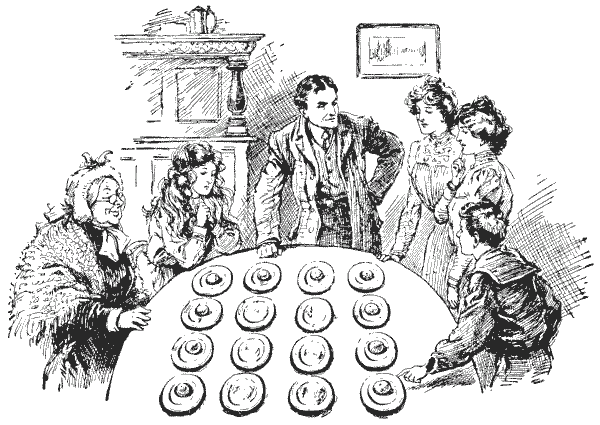
The family represented in the illustration are amusing themselves with this little puzzle, which is not very difficult but quite interesting. They have, it will be seen, placed sixteen plates on the table in the form of a square, and put an apple in each of ten plates. They want to find a way of removing all the apples except one by jumping over one at a time to the next vacant square, as in draughts; or, better, as in solitaire, for you are not allowed to make any diagonal moves — only moves parallel to the sides of the square. It is obvious that as the apples stand no move can be made, but you are permitted to transfer any single apple you like to a vacant plate before starting. Then the moves must be all leaps, taking off the apples leaped over.
Solutions: 1
This eBook is for the use of anyone anywhere in the United States and most other parts of the world at no cost and with almost no restrictions whatsoever. You may copy it, give it away or re-use it under the terms of the Project Gutenberg License included with this edition or online at http://www.gutenberg.org. If you are not located in the United States, you'll have to check the laws of the country where you are located before using this ebook.